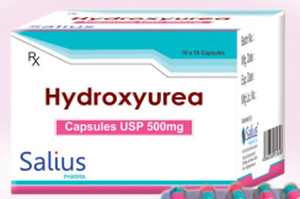

MedFriendly®


Anti-sickling Agents
Anti-sickling agents are a type of medication that works
against the production of abnormal, rigid, sickle-shaped
red blood cells. Red blood cells are cells that help carry
oxygen in the blood. Sickle-shaped red blood cells are
present in a disease known as sickle cell anemia.
Anemia is a condition in which there are a decreased
number of red blood cells or an abnormally low amount
of hemoglobin in the blood. Hemoglobin is substance
present in red blood cells that help carry oxygen to cells
in the body.
Hydroxyurea is a type of anti-
sickling agent.
FEATURED BOOK: Sickle Cell Disease in Clinical Practice
In sickle cell anemia, the sickle-shaped red blood cells are less flexible, which makes it
more difficult for them to pass through capillaries (the smallest blood vessels in the body)
to deliver oxygen. This is why weakness and fatigue are common symptoms of sickle cell
anemia. The most commonly used anti-sickling agent is hydroxyurea which is approved
by the Food and Drug Administration for that purpose. Hydroxyurea works by reactivating
fetal hemoglobin (the protein that transports oxygen until about 6-months of age) in place
of an abnormal form of hemoglobin (known as hemoglobin S) that causes sickle cell
anemia. Anti-sickling comes from the Greek word “anti” meaning “against,” the Latin word
“sickle” meaning “hatchet,” and the Latin word “agentem” meaning “effective.” Put the
words together and you get “effective against hatching.” A sickle is a type of curved,
metal farming instrument.
"Where Medical Information is Easy to Understand"™















